With 8 bit color depth there are 256 colors. With 24 bit color depth there are 16,777,216 colors. Is there a direct mapping between every color in the 8 bit space to a color in the 24 bit space? I would think the answer to this question is yes, but the comments to this answer suggest the mapping is only an approximation.
What I would like to do is create a palette of 8 bit colors in the 24 bit color space by specifying a 24 bit RGB value. I figured I could do this using this (obviously broken) logic:
3 bits for red == 8 unique values of red, 0-7
3 bits for green == 8 unique values of green, 0-7
2 bits for blue == 4 unique values of blue, 0-3
255/8 = 32 for red and green increment value
255/4 = 64 for blue increment value
{
"Red": [0,31,63,95,127,159,191,223,255],
"Green": [0,31,63,95,127,159,191,223,255],
"Blue": [0,63,127,191, 255]
}
So with 9 values of red, 9 values of green, and 5 values of blue I get 405 colors which is wrong. I know I need 8 values of red and green and 4 values of blue so I just adjusted things a bit:
255/87 = 36.57142857142857 for red and green increment value
255/43 = 85 for blue increment value
So this works for blue, but now my red and green increment value is not a whole number.
Once I got the mapping figured out I was going to loop through it like this:
for(r in rgbData.get("Red")) {
for(g in rgbData.get("Green")) {
for(b in rgbData.get("Blue")) {
colors.add("rgb ${r} ${g} ${b}")
}
}
}
This may be a totally incorrect approach to do what I want, just wanted to show I have tried something :)
UPDATE:
I tried the approach @Marc B suggested but it doesn't seem right. For instance, there is no white in the map I generated (which is 255, 255, 255 using 24 bit RGB). Using his approach this makes sense to me because the highest RGB value is 224, 224, 192 as can be seen:
full red == 111
111 >> 5 == 11100000
full green == 111
111 >> 5 == 11100000
full blue == 11
11 >> 6 == 11000000
11100000 11100000 11000000 == 224, 224, 192
224, 224, 192 != white
Here is the map generated using his approach:
{
"Red": [0,32,64,96,128,160,196,224],
"Green": [0,32,64,96,128,160,196,224],
"Blue": [0,64,128,192]
}
And the palette it generates:

UPDATE 2:
After doing some more research I have realized that when "X colors" (X being some number like 256, 16,777,216, etc.) are referred to that those colors can be just about anything. There is not a predefined set of 256 colors that are "the" 256 colors, though there are (as several have already mentioned) predefined sets of 256 colors that are "the" 256 colors for a specific implementation. I was also able to find a GIMP .gpl palette file on my organizations wiki that specified the 256 colors I am concerned with, so I can just copy the values out of there.